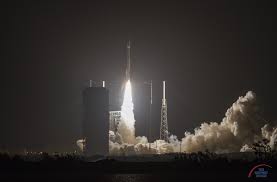 Some of us believe in luck more than others; and that’s ok, given an inherent inability to empirically test for verifiable levels of luck in occurrences of any kind.
Some of us believe in luck more than others; and that’s ok, given an inherent inability to empirically test for verifiable levels of luck in occurrences of any kind.
We can’t argue that a five-gallon bucket of luck found its way into amateur astronomer cum photographer Victor Buso’s proverbial arms – camera lens, to be specific – last September. Although it might not seem like breaking news, the team of researchers responsible for publishing a journal entry citing Buso’s work hit the world of academics on February 22, 2018, making this story as hot as any other.
Hailing from Rosario, Argentina, the amateur photographer was actually aiming to capture imagery of a supernova. Prior to the September 20 capture, Buso had never captured video or still images of any supernova in his young career.
Researchers named the supernova SN 2016gkg, which occurred on the outer limits of far-far-away galaxy NGC 613. Capturing such an event is highly unlikely – researchers placed the odds at worse than one in one million – considering that galaxies produce an average of just one supernova each century.
SpaceX’s Rival May Slim Its Rocket Launch Costs Down Substantially
SpaceX launched its first space rocket into – well, it goes without saying – space on February 6, 2018. It was the first company to carry out such an activity, as no other entities than governments have invested in space programs before.
The Falcon Heavy rocket was a whopping 230 feet tall, and launched Tesla’s newest vehicle into the depths of outer space – the Tesla Roadster. The most innovative part of the Falcon Heavy launch wasn’t the launch, per se, but rather the autonomous landing of two of three 160-foot-tall rocket boosters use to propel the rocket into space.
Those two boosters fell back – I must reiterate, on their own! – to planet Earth without any damage. The third rocket fell into the ocean, though it was still able to be scavenged. Saving such rockets is a major way to conserve costs in the space business, as just about every part of a rocket costs more than a million dollars.
A 2005 merger between aerospace giants Lockheed Martin and Boeing, United Launch Alliance, is slated to send things into space for less than $100 million per launch.
The largest rocket of ULA costs about $350 million to launch. Now that the company’s upcoming Vulcan will be able to recover its parts, significant savings are eminent.





